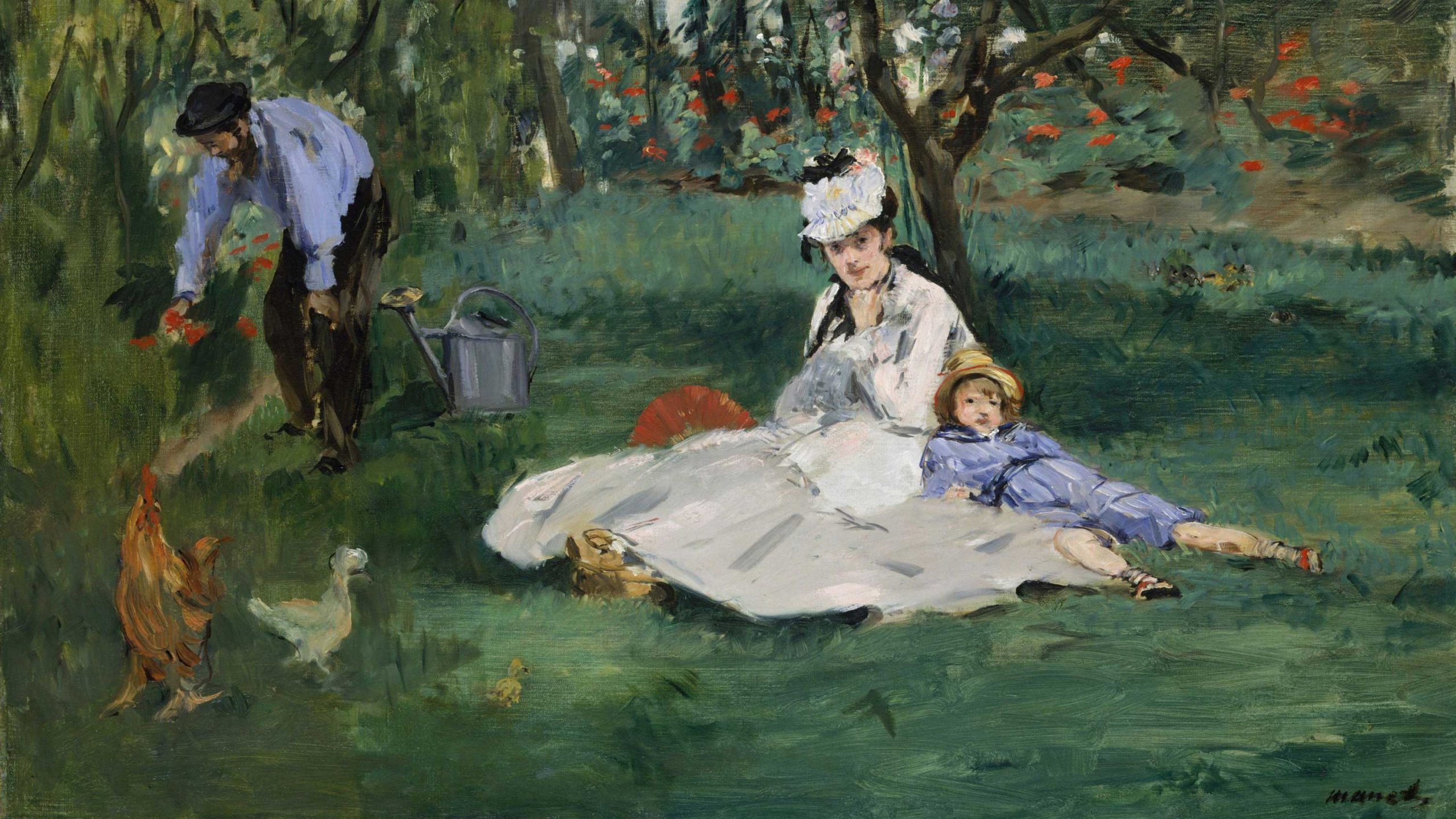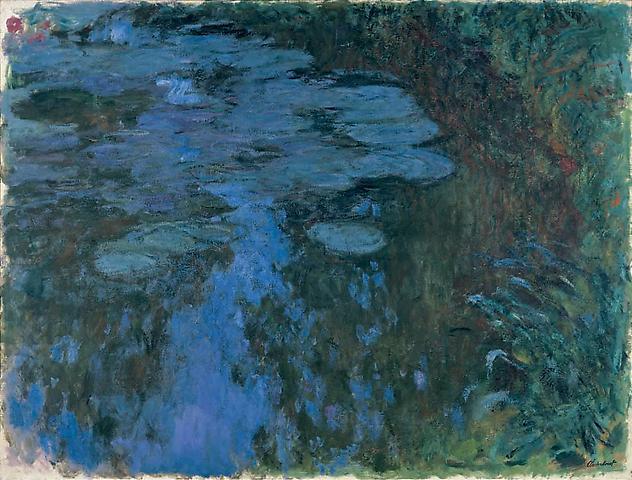BOSTON - In this greyest of times, Claude Monet's luminous paintings seem to shimmer with the incandescent colors of aurora borealis in a revelatory exhibition at the Museum of Fine Arts. Claude Monet was in almost every sense the founder of French Impressionist painting, the term itself coming from one of his paintings, Impression, Sunrise. As a child, his father wanted him to go into the grocery business, but his heart was in the profession of artistry, and at age 11, he entered Le Havre secondary school of the arts. Descarga fiable para Mac de Calarty Claude Monet GRATIS. Descarga libre de virus y 100% limpia. Consigue Calarty Claude Monet descargas alternativas.
The small village of Giverny, located in Upper Normandy, was a source of inspiration for the artist Claude Monet. It houses the estate of Monet, which has now become a museum. Monet’s estate dedicated a number of his creative works, always focusing on the abundance of vegetation.
Pictures dedicated to the town Giverny, always “live” and juicy. They are buried in colors and a palette of bright colors. Ximeta motherboards driver. It is noteworthy that the owner put a lot of his own efforts to create flower gardens near the manor. He planted flowers and shrubs with his own hands. His hands, masterfully wielding a brush, also deftly wielded a shovel and a rake. What reveals the versatility of Monet and his originality. The picture presented here demonstrates the artist’s particular reverent attitude to the place of his settlement. What is remarkable about this picture.
First, the date of writing the work coincided with the troubles associated with the health of Monet. He began to develop a cataract – a sentence for a clear perception of colors and the outline of objects. Secondly, this place is recognizable in other, more popular works of the author, for example, in “Water Lilies”. Thirdly, the method of presentation Claude chose not very good. The painting resembles a jumble of greenery and red spots. The work is perceived very hard in terms of clarity of the letter. This is due to progressive eye disease.

Objects have ceased to have clarity, so the artist wrote a picture of stained, blurred and one-color. However, Monet’s plan was focused on the summer and the pomp of everything that blossoms, blossoms, stretches upwards towards the sun. It is evident that the estate has already become abandoned, and nature has come into its own.
Images Of Claude Monet Paintings
Forces at the 73-year-old Monet was no longer there, but the painting he did not throw to the last days. After the artist’s death, the younger son was courting the garden, as well as the wife of the eldest son, Blanche, and also an old gardener. After other artists began to settle in Giverny, drawing inspiration from nature in the outskirts of Paris, following the example of the great impressionist.


Related Paintings:
- House of Artists, view from the rose garden by Claude Monet Presented picture – the landscape of the impressionist Monet. It belongs to the late period of creativity, when the artist had two years left until his death, his hand was..
- Arch in flowers, Giverny by Claude Monet Arch in flowers, Monet, description of the picture… He was in search of “transparency, fog” Wandered for hours along the meandering Roux And turned the illusion of deception From color..
- Main path through the garden in Giverny by Claude Monet In the history of art, the name of the artist is closely related to his home in Giverny. Since 1883, he rented this house from a Norman landowner 80 kilometers..
- Girl in the Garden, Giverny by Claude Monet … Of all the lands they brought him flowers Friends of Artists and came themselves. And in the workshop – canvases, canvases, canvases… He glorified flowers and painted with flowers…..
- House of Artists in Argenteuil by Claude Monet Beautiful clean house. Blue vases in the style of the painting “Gzhel” are in a row. Worn out yard and plenty of beautiful flowers. The window frames are painted sky..
- Haystack at Giverny by Claude Monet The work “The Haystack at Giverny” was painted by the famous French impressionist Claude Monet in 1886. In this picture, the artist used one of his best skills – he..
- Artist’s Garden at Giverny by Claude Monet Since 1883, Claude Monet’s reputation as a talented painter was entrenched, and his financial situation improved, and he, like other Impressionists, began to seek solitude. In fact, for many years..
- Chemin principal à travers le jardin de Giverny – Claude Monet Dans l’histoire de l’art, le nom de l’artiste est étroitement lié à sa maison de Giverny. Depuis 1883, il loue cette maison à un propriétaire normand à 80 kilomètres au..
- Maison des Artistes à Giverny – Claude Monet Le petit village de Giverny en Haute-Normandie est devenu une inspiration pour l’artiste Claude Monet. Il abrite le domaine Monet, devenu aujourd’hui musée. Monet a consacré une partie de son..
- Poplar Series by Claude Monet These poplars grew on the banks of the River Ept near the house of Monet in Giverny, and in the summer of 1891 the artist began to paint them at..
- Camino principal a través del jardín en Giverny – Claude Monet En la historia del arte, el nombre del artista está estrechamente relacionado con su hogar en Giverny. Desde 1883, alquiló esta casa a un terrateniente normando a 80 kilómetros al..
- Sunset in Venice by Claude Monet The painting “Sunset in Venice” by Claude Monet, which was painted in oil in 1908, belongs to the National Museum of Cardiff, the national art gallery of Wales. The original..
- Casa del artista en Giverny – Claude Monet El pequeño pueblo de Giverny, ubicado en la Alta Normandía, fue una fuente de inspiración para el artista Claude Monet. Alberga la finca de Monet, que ahora se ha convertido..
- Water Lilies by Claude Monet A pond with water lilies near the house of Claude Monet in Giverny, north-west of Paris, became the main motive of the artist’s later paintings. The canvas, showing the surface..
- Irises by Claude Monet Claude Monet painted the picture “Irises” from 1914 to 1917. He was a true master of landscapes, an eminent impressionist. Quite often he went to work in the open air,..
- Arc en fleurs, Giverny – Claude Monet Arche en fleurs, Monet, description de l’image… Il a erré pour “transparence, brouillard” A erré pendant des heures le long du ruisseau Ru Et a transformé l’illusion de la tromperie..
- Chica en el jardín, Giverny – Claude Monet … De todas las tierras le trajeron flores amigos de artistas y vinieron ellos mismos. Y en el taller – lienzos, lonas, lienzos… Él glorificó flores y pintó con flores…..
- Frost by Claude Monet Claude Monet wrote the painting “Frost” in 1880. This artist can be called a recognized master in writing landscapes. His works are distinguished by their technique, color combinations, they attract..
- Arco en flores, Giverny – Claude Monet Arco en colores, Monet, descripción de la imagen… Estaba en busca de “transparencia, niebla” Deambuló durante horas por el serpenteante Roux Y convirtió la ilusión de engaño Del color y..
- Fille au jardin, Giverny – Claude Monet … Des fleurs du monde entier lui ont été apportées par des amis artistes et elles sont venues par elles-mêmes. Et dans l’atelier – toiles, toiles, toiles… Il a chanté..
Mimicking Monet’s love of gardening, students will create paintings and transform their classroom into a garden gallery, using The Water Lily Pond for inspiration.


Vmware sound cards & media devices driver download for windows. Students will be able to:
- listen actively to a book read aloud by the teacher;
- identify and describe artistic elements in a painting;
- compare a painting to illustrations in a book; and
- use unusual tools to create their own painting inspired by an artist.
Lesson
- Begin by sharing Monet’s The Water Lily Pond with your students. Give students plenty of time to look at the painting and share their observations. Have them imagine they are a frog sitting on one of the lily pads. What would they see? What would it feel like to sit on a lily pad? What sounds would they hear? What would they smell?
- Using the About the Art section, talk about how Monet was an avid gardener who turned his gardens into works of art. Share with students that Monet tended to his plants as carefully as he did his paintings.
- Read The Magical Garden of Claude Monetby Laurence Anholt to the class.
- Have students look closely at Monet’s painting. How are the illustrations in the book similar to The Water Lily Pond? How are they different? What colors do they have in common? What shapes are the flowers? Help the students recognize that even though Monet’s flowers don’t have the same shape as real flowers, we can still tell what they are because of the setting, the colors, and even the title of the painting.
- Explain to the students that they will be creating garden paintings in the style of The Water Lily Pond using different materials such as sponges, cotton balls, cotton swabs, and pencil erasers.
- Distribute paper, paper plates with paint, and various painting tools to the students. Allow students plenty of time to experiment with the materials so they can understand what type of print each one makes. Encourage them to try different tools and painting techniques and to try to emulate Monet’s painting. Some techniques the students could try are: creating dots with pencil erasers or cotton balls; sponging paint to create reflections; and making grass or leaves with cotton swabs. Encourage the students to experiment with lots of different painting techniques and to explore and create their own painting style.
- Mount the finished paintings next to each other so that the classroom walls are transformed into a garden scene. Show Monet’s painting again. How does the wall of paintings remind students of Monet’s garden? Do they think this display would remind Monet of his real garden?
- Invite parents and other classrooms to view your class art gallery.
Materials
- One copy of The Magical Garden of Claude Monetby Laurence Anholt
- Paint
- Paper plates
- Construction paper
- Assorted utensils for painting (e.g. sponges, cotton balls, cotton swabs, clean pencil erasers, brushes in a variety of sizes)
- About the Art section on The Water Lily Pond
- One color copy of the painting for every four children, or the ability to project the image onto a wall or screen
Standards
Clarity Claude Monet Meaning
- Visual Arts
- Invent and Discover to Create
- Observe and Learn to Comprehend
- Relate and Connect to Transfer
- Envision and Critique to Reflect
- Language Arts
- Oral Expression and Listening
- Critical Thinking & Reasoning
- Information Literacy
- Invention
- Self-Direction
